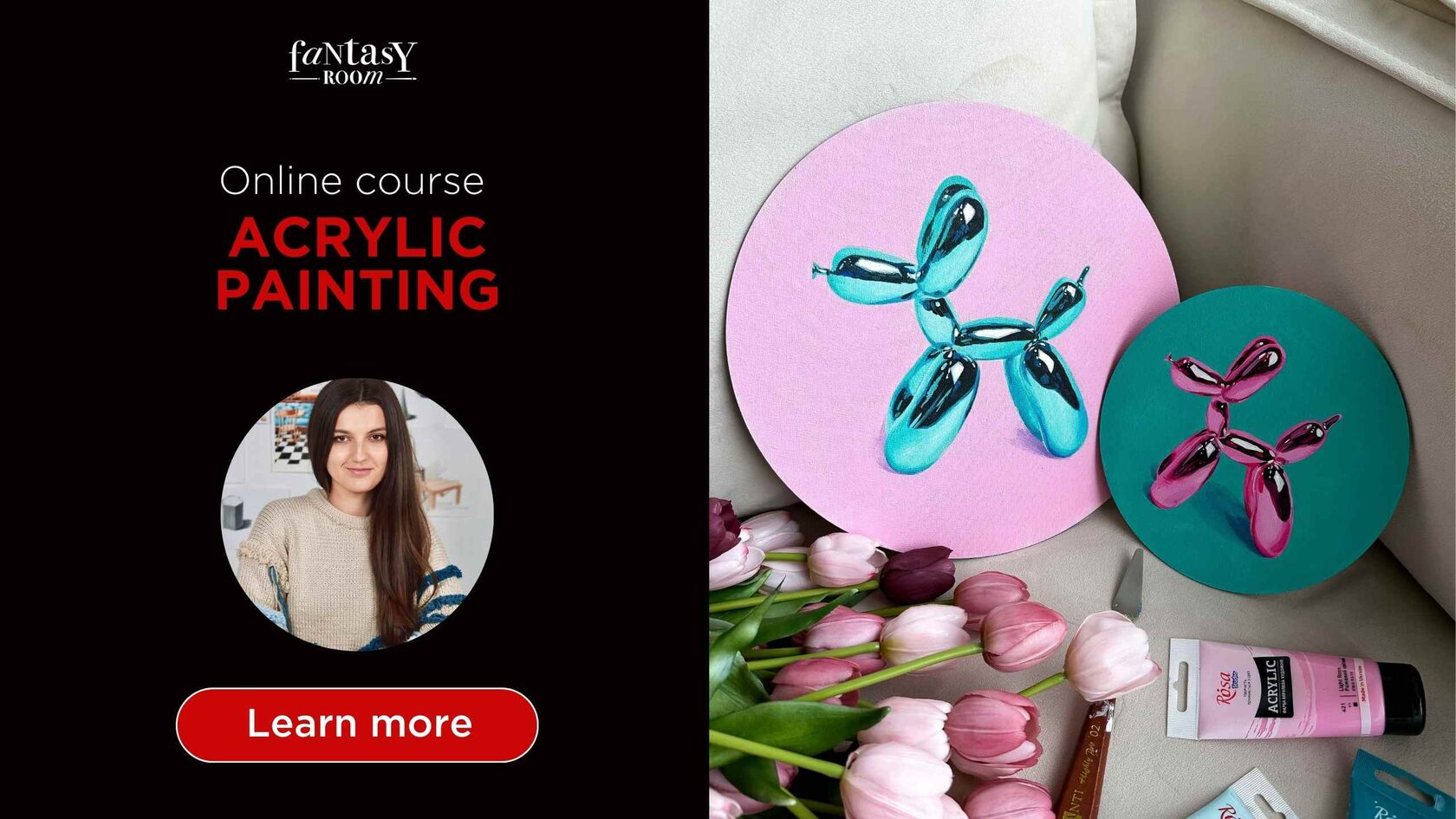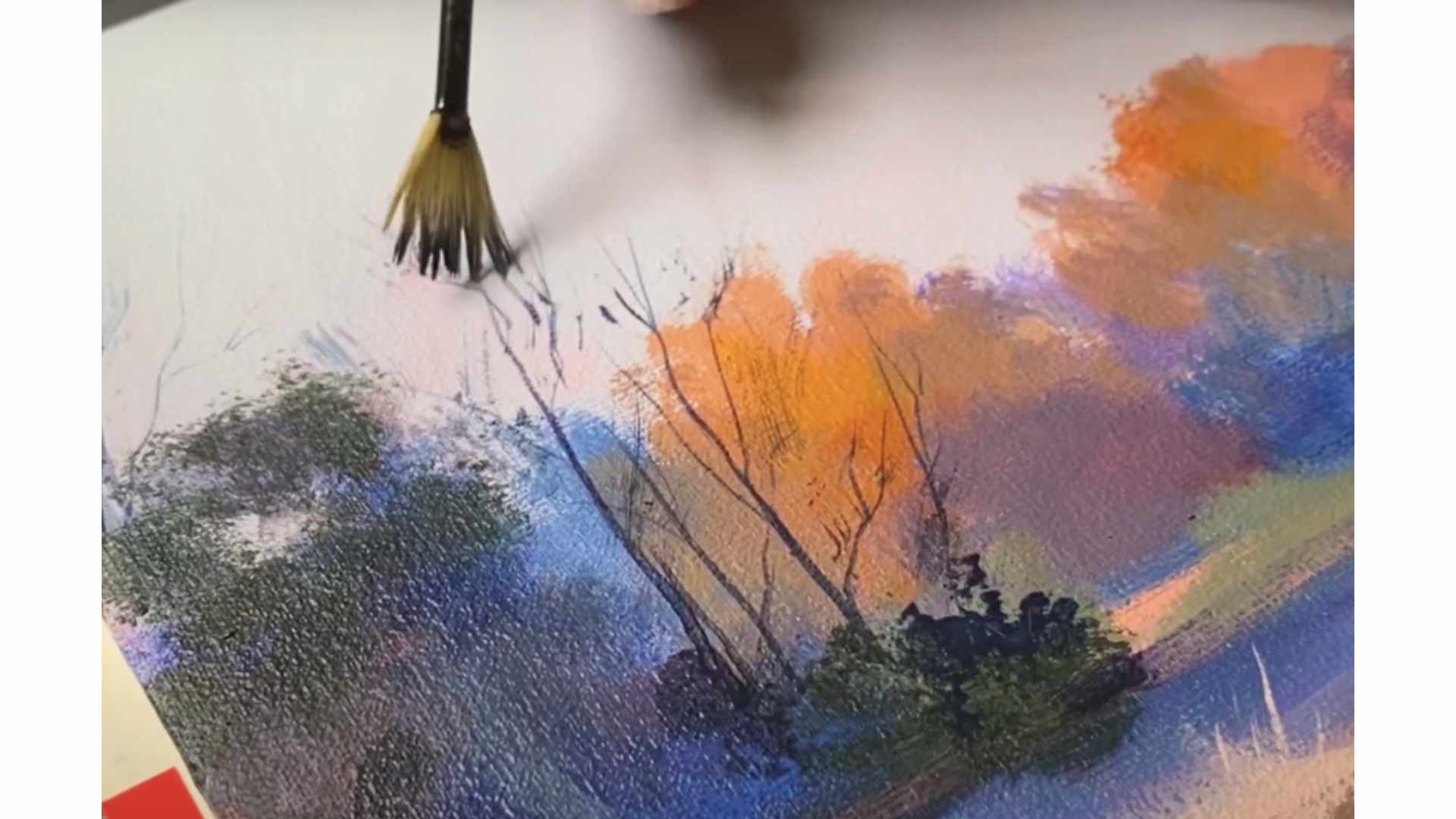The choice of brushes for working with acrylic paints plays an important role in how you create your works of art. Each type of brush has its own unique characteristics, which can affect how you apply paint to the canvas. Let's look at the key aspects of choosing brushes to achieve the best results when working with acrylic.
Palette knife

It has a great ability to blend shades and create spots on the canvas. Its wide, flat shape allows you to easily create 3D textures and soft transitions between colors. Palette knives can also be used for large strokes and even some fine lines, making them a versatile tool for the artist

Flat brush

These brushes are ideal for applying primer to the canvas, painting large areas and creating crisp edges. Due to their flat shape, they can also be used to draw fine lines when the brush is turned on its side.

Flat beveled brush

These brushes combine the advantages of flat and round brushes. Their angular shape makes them ideal for working in tight spaces and creating angular details. They can also be used to create textural effects such as grass or wool.

Regular flat brushes are one of the most versatile types of brushes used when working with acrylic paints. They have a flat shape with straight, sharp edges and a wide belly. This type of brush is ideal for applying paint to large surfaces and creating crisp, even lines. Flat brushes are also good for working with hard paints and for creating textured effects. They can be used for both background fills and detailing, making them one of the most important tools for artists of all levels.

Round brushes

These brushes have a round tip that makes them ideal for creating detail and drawing curved lines. They can also be used to work in the wet-on-wet technique, where paint is applied to the canvas on top of an already dry layer.

The acrylic painting course offers students a unique opportunity to immerse themselves in the world of creativity using a modern and versatile medium - acrylic paints. By exploring various techniques and methods of using acrylic, students will learn to create works of art with vibrant colors, interesting textures and deep emotions. Regardless of your skill level, this course will help you unlock your creativity and master the basics of acrylic painting, making your creativity more vibrant and expressive. Join our course and discover a world of new artistic possibilities with acrylic paints.
Liner

Small Detail Brush (liner): Liners have a fine tip, which makes them great for working on fine details and creating fine lines. They are suitable for drawing thin tree branches, grass textures and other small elements on canvas

Brushes with bristles

These brushes have stiff bristles that are ideal for creating texture effects and blending. They are often used to depict nature, such as tree leaves, grass, or water waves.
Brush sizes

Various brush sizes provide the artist with greater flexibility when working with acrylic. From large brushes that are good for quickly covering large surfaces, to small brushes that give you control over fine detail, each size has its own unique benefits. Determining the optimal brush size depends on the specific task and style of the artist.
Quality of brushes

When choosing brushes, you should pay attention to their quality and durability. High-quality brushes are usually made from natural or synthetic bristles, which hold paint well and allow for precise application. These brushes also usually have durable wooden handles and stable bristles, making them an ideal choice for professional use.
Watch the full video on our YouTube
Conclusion
Choosing brushes for working with acrylic paints is an important step for every artist. Each brush type and size offers its own unique capabilities and effects, so it's important to experiment with different options to find the ones that work best for your style and technique. Remember that choosing the right brushes can greatly affect the quality and outcome of your work.











